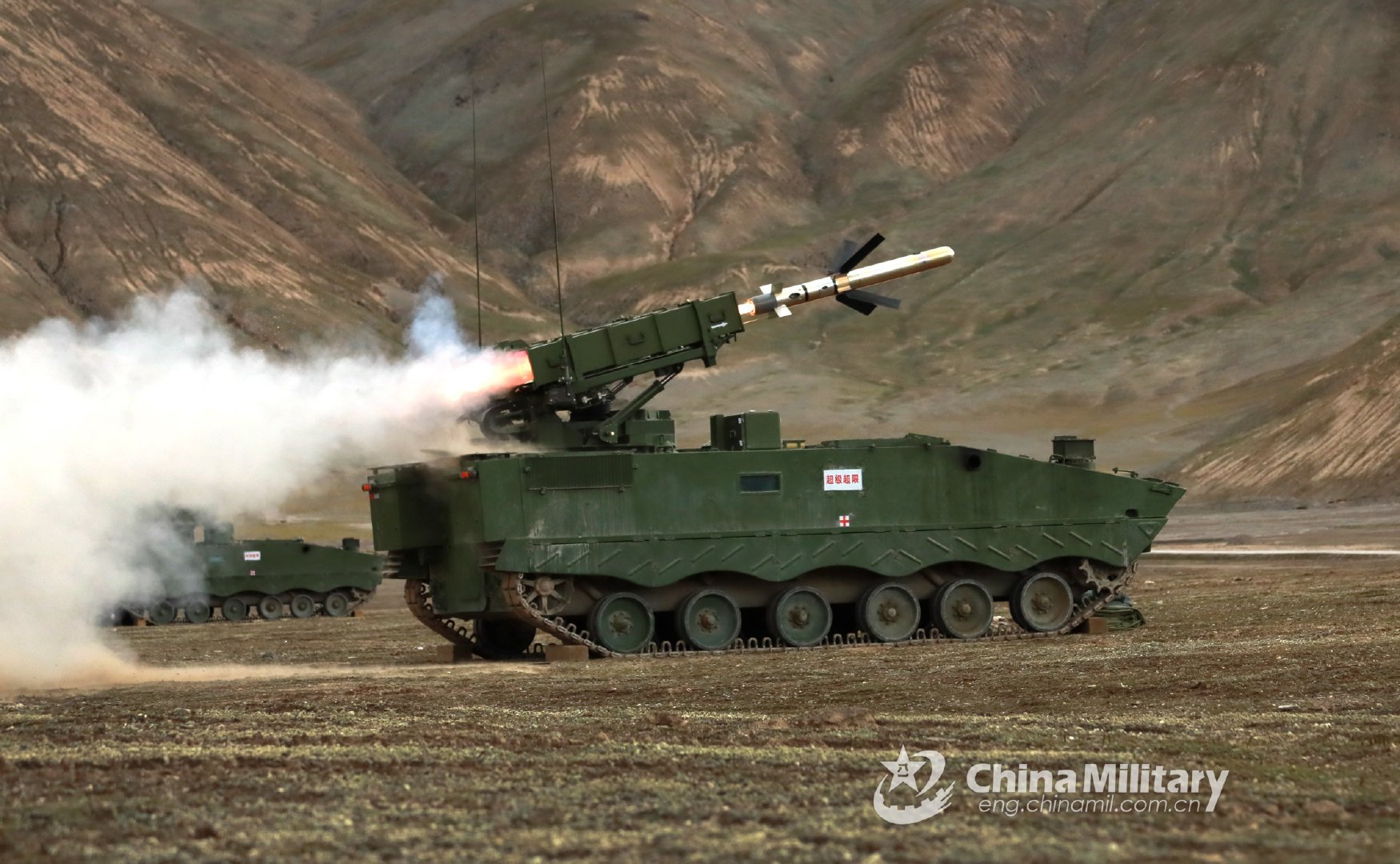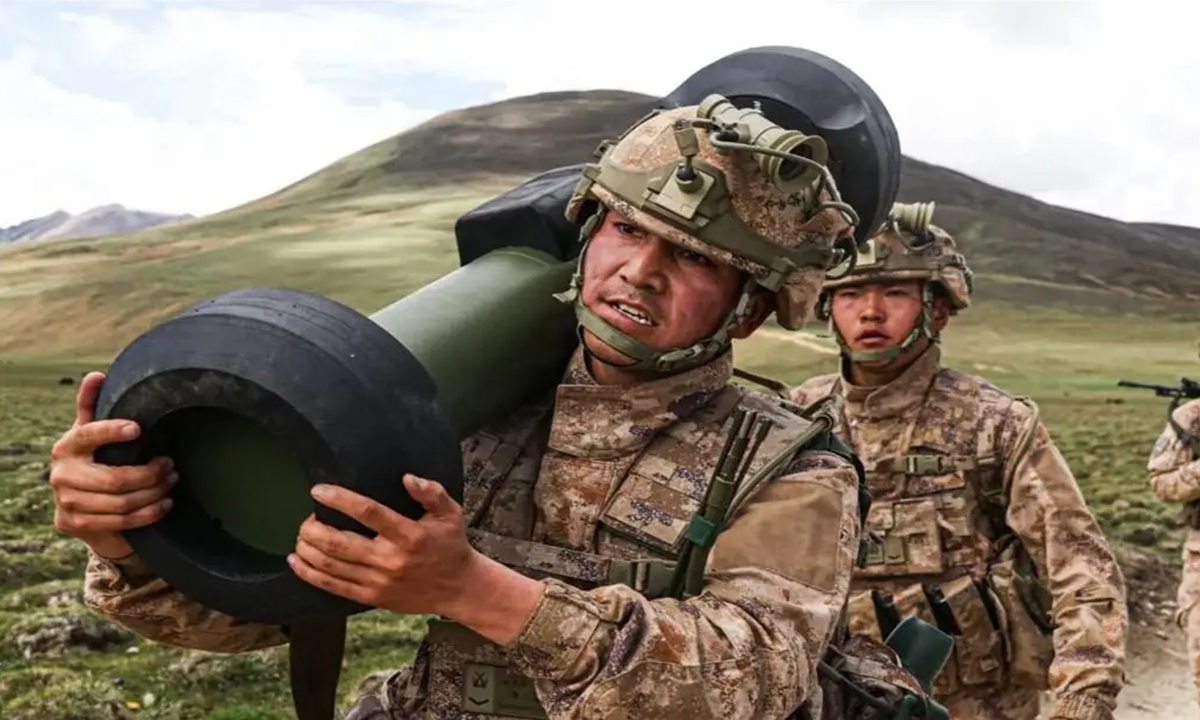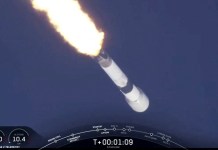When China began to invest heavily in the modernization of the People’s Liberation Army (PLA) in the 1990s, one area to which the country’s ground forces attached high priority was anti-tank guided missiles (ATGMs).
ATGMs were considered a cost-effective way of engaging the vast and more advanced armored units it might face in a potential war. It seems that China is now trying to show its strength in anti-tank missile technology.
According to state-owned Global Times, the PLA has reportedly deployed a new sort of vehicle-mounted ATGMs capable of targeting enemy tanks “from above”, meaning at higher heights, causing more harm than a top-down attack.
Quoting an unnamed military expert, Global Times said that the new missile is more powerful than its predecessors due to its greater caliber, and it is very mobile when mounted on an off-road assault vehicle that can run across difficult terrain.
The top-down attack is meant to take advantage of the exposed soldiers on the top of a tank. The new missile is compatible with China’s Mengshi off-road assault vehicle, and infantry fighting vehicles.
The idea of a higher-altitude top-down strike is intriguing since it may be particularly useful in the Tibetan plateau in western China and other areas where air support is lacking. Needless to mention, China is embroiled in a border standoff with India in the eastern Ladakh bordering Tibet.

China boasts a wide range of ATGMs, including portable ones and those launched by attack helicopters, drones, armored vehicles, and assault vehicles. The new missile could be mass-produced and widely employed by the PLA in the near future, the GT report said.
The PLA’s arch-rival, the US Army also possesses some of the most lethal ATGM such as TOW, Javelin, or even the ground-launched Hellfire missile.
The PLA had previously depended on the HJ-8, which had been in service since 1985, and its ability to fight advanced enemy battle tanks like the Soviet T-80 and American M1 was questioned.
In the hands of Yugoslav troops in the 1990s, the HJ-8 proved highly effective, but the performance criteria for the missile’s successors were substantially greater as the PLA sought more complex ATGMs to defeat the most advanced Western armor.
The HJ-9 ATGM
The HJ-9 was the PLA’s first post-Cold War ATGM, and it commenced operations in 1999. In comparison to the wire-guided HJ-8, the HJ-9 used laser guidance to improve accuracy and impact speed.
The upgraded missile had two rocket motors instead of one, which increased the missile’s range by one and a half kilometers, giving it a total range of 5.5 kilometers. Because of its small weight and ease of redeployment, the HJ-9 posed a severe threat to enemy battle tanks, especially when combined with its precision and speed.

The missile’s manufacturers claim it can penetrate 1,200mm of armor, but it can also be fitted with high explosive or thermal effect payloads for use against non-armored targets like bunkers.
The HJ-9A, an improved version, was equipped with a millimeter-wave seeker that provided ‘fire and forget’ capabilities, eliminating the requirement for human direction after launch. The HJ-9B, which incorporated an updated seeker, was a further development on the design.
The HJ-10 ATGM
The HJ-10 was designed with enhanced technologies for fighting opposing helicopters. Although later versions were fitted with laser homing and millimeter-wave radar seekers comparable to the HJ-9A, the missile used fiber optic wire-guided technology.
The HJ-10 was not designed as a replacement for the HJ-9 or HJ-8, but rather as a heavier derivative that could be launched by combat helicopters and light-armored vehicles using similar technologies. The HJ-10’s increased weight resulted in a heavier payload and a longer range, with the missile predicted to be able to hit enemy armor from a distance of well over 10 km.

The missile can carry two types of warheads: a tandem charge meant to overcome modern reactive armor and a top assault variation designed to take advantage of a vehicle’s more weak sky-facing armor.
The HJ-10 has never been exported due to the sensitivity of its technologies and is only used in the PLA. Despite the fact that the highly complicated missile platform took more than two decades to create, it is now a vital asset for the PLA.
The HJ-11, a missile designed as a development of the lightweight HJ-8 design, was a separate missile design that was proposed for export. The platform was promoted as a third-generation weapons system, replacing the HJ-8’s earlier wire guidance system, and was equipped with semi-active laser guidance to replace the HJ-8’s older wire guidance system. For a very modest price, this marked a significant upgrade over the original HJ-8.
The HJ-12 ATGM
The HJ-12, a platform designed by China North Industries Corporation (NORINCO) and put into production in 2014, is the most advanced Chinese anti-tank missile to date.
The missile has yet to be exported, but it is thought to be the world’s most capable platform of its sort. Because of the missile’s superior soft launch systems, it may be fired from inside structures, making it a vital defensive weapon.
Operators can take cover immediately after shooting the missile, giving them time to reload and engage a second target, owing to fire-and-forget technologies and the ability to lock on to targets before launching.

The HJ-12 is capable of breaching explosive reactive armor and has a maximum firing range of 4 km. Longer range engagements are achievable at the cost of precision and penetrative power.
The platform combines advanced capabilities with a modest weight of about 22 kg, allowing ground forces to stay mobile while deploying devastating firepower. The missile is nimble and designed to strike enemy vehicles from above, taking advantage of their inferior armor.
The HJ-12 is the result of decades of research and development into powerful anti-tank missiles, and it gives PLA ground forces the capacity to fight even the most capable armor even if they don’t have their own armor or air assistance.
It’s unclear whether the missile will spread to Chinese export customers like the Russian Kornet and North Korean Bulsae-3, which are both commonly employed in Middle Eastern conflicts today.
- Contact the author at ashishmichel@gmail.com
- Follow EurAsian Times on Google News




